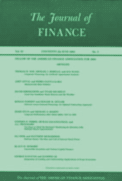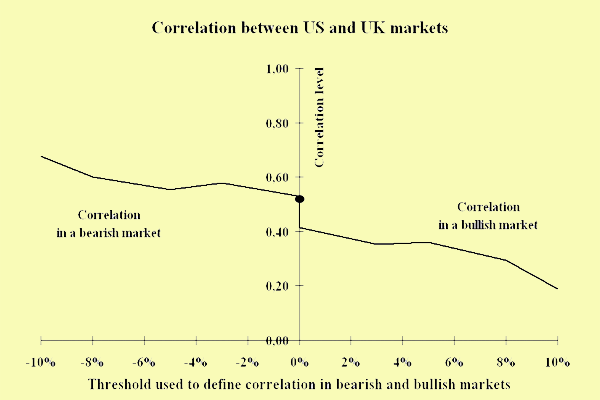

Article classé parmi le Top 100 mondial
Diversifying internationally may be justified by the mere size of foreign markets, even for U.S. investors. Indeed, no single market accounts or more than half of world capitalization. From a theoretical point of view, in a fully efficient, international capital market, buying the world market portfolio would be the natural strategy. The argument often heard in favor of international investment is that it strongly lowers risk without sacrificing return. Domestic securities tend to move up and down together because they are similarly affected by domestic conditions, such as money supply announcements, movements in interest rates, budget deficits, and national growth. This creates a strong positive correlation among all national securities - stocks and bonds alike - traded in the same national market. Looking at international capital markets may then be a good opportunity for investors searching for methods to spread their risk and diversify away their national market risk.
One way to assess the degree of dependence of international capital markets is to compute the correlation coefficient. Correlation coefficients are always much lower than unity. For example, over the last four decades, the historical correlation between the U.S. equity market and other major equity markets are : 0.52 with the U.K., 0.44 with France, 0.39 with Germany, and 0.27 with Japan. Such correlation coefficients are much lower than those usually obtained between two typical stocks of the same country. For investors, this means that there is ample room for successful risk diversification.
However, correlation is not constant but varies quite strongly over time. In particular, the level of correlation has been related to the level of market volatility. An often-raised question is whether international correlation increases in periods of high turbulence. The dominance of global factors tends to be associated with volatile markets (e.g. the oil crisis and the Gulf war). Using data on the five largest stock markets (U.S., U.K., Japan, Germany and France), this article shows that correlation is not related to market volatility per se but to the market trend. Using multivariate extreme value theory, it is shown that correlation increases in bear markets, but not in bull markets. This is illustrated in the figure below for the US/UK pair. The correlation of returns exceeding a given threshold increases for negative thresholds (a bearish market) and decreases for positive thresholds (a bullish market).

 Is the correlation in international equity returns constant: 1960-1990 ?
Is the correlation in international equity returns constant: 1960-1990 ?
 The asymptotic distribution of extreme stock market returns
The asymptotic distribution of extreme stock market returns
 From VaR to stress testing : the extreme value approach
From VaR to stress testing : the extreme value approach
 Retour à la liste des publications
Retour à la liste des publications
 Conseil en gestion des risques
Conseil en gestion des risques
 Glossaire de termes financiers
Glossaire de termes financiers